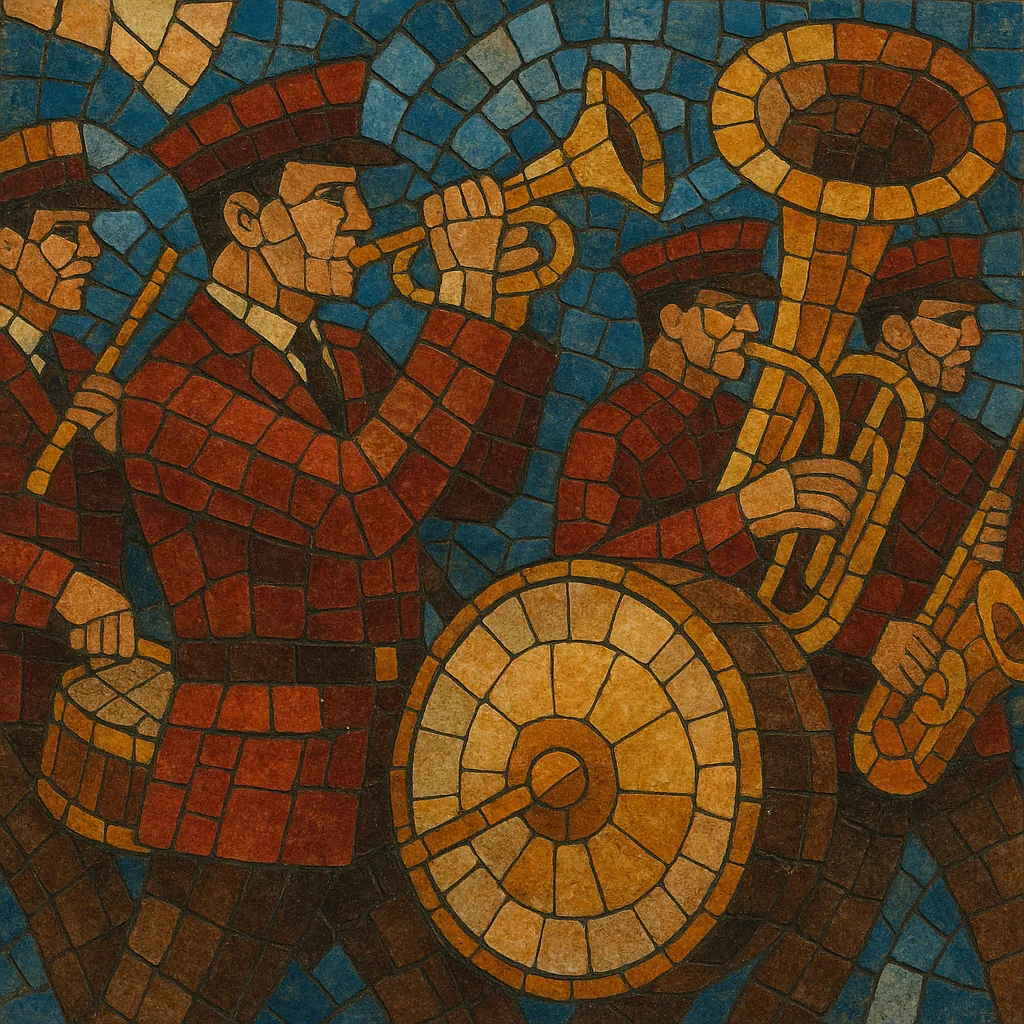Dobrado is a Portuguese march style for wind and brass bands, closely associated with military and civic parades and the vast community of Portuguese and Brazilian "bandas filarmónicas". Written in a lively duple meter (most often 2/4), it emphasizes a steady, emphatic stride suitable for marching, with prominent snare drum patterns, brilliant brass fanfares, and tuneful clarinet/cornet melodies.
Structurally, dobrados typically follow the classic European march layout: a short introduction, two contrasting strains, a lyrical trio (frequently modulating to the subdominant), an optional break strain, and a reprise or rousing coda. While primarily instrumental, their memorable, singable themes make them staples at civic festivities, processions, and band festivals across Portugal and in Lusophone communities, especially Brazil.
Dobrado emerged in Portugal in the late 19th century as a localized form of the European quick march. It absorbed the formal clarity and public function of the general "march" while developing idiomatic melodic turns and rhythmic feel shaped by Portuguese band culture and repertoire.
By the early 20th century, dobrados had become central to the repertoire of military and municipal bands (bandas filarmónicas). Their role in religious processions, patriotic commemorations, and village festivities ensured constant circulation, with bandmasters composing new pieces tailored to local communities and occasions. The typical structure—intro, strains, trio in the subdominant, and stirring coda—mirrored European practice but favored particularly tuneful, lyrical trios and brilliant brass writing.
Portuguese band traditions took strong root in Brazil, where dobrados became parade standards for police, fire brigade, and military ensembles. In Pernambuco and neighboring regions, the brisk energy and instrumentation of dobrados (together with polka and other band forms) fed directly into the birth of frevo in the early 20th century, linking the genre to the soundscape of Carnival as well as to civic ceremonies.
Today, dobrados remain emblematic in both Portugal and Brazil: they open and pace parades, frame civic rituals, and serve as pedagogical repertoire for youth and community bands. Their influence is audible in Brazilian Carnival "marchinha" and especially in frevo’s kinetic brass writing and driving snare figures, preserving the dobrado’s spirit in newer popular forms.


